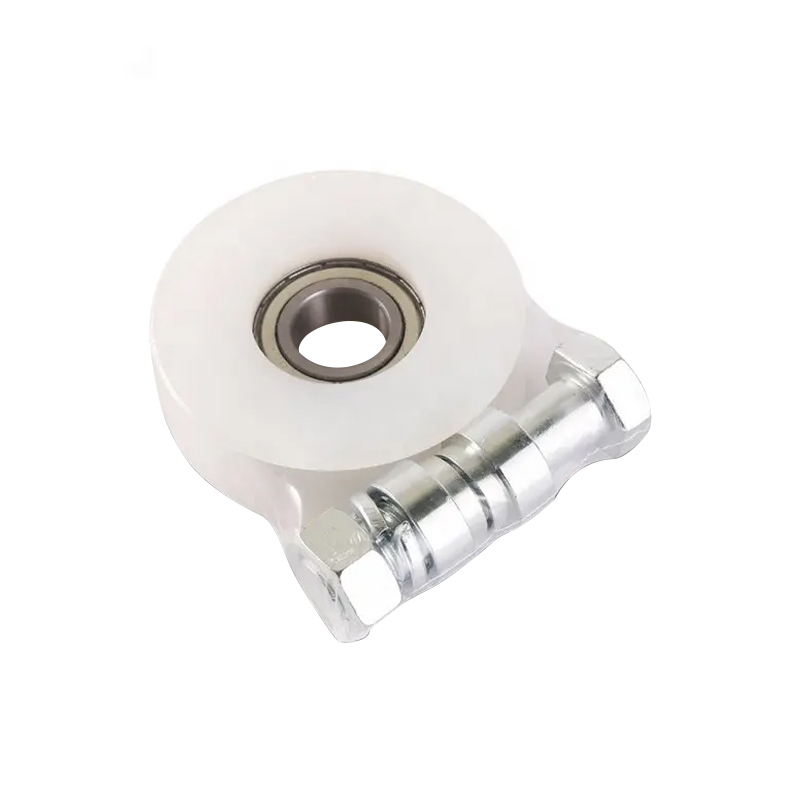No. 200 Gaoxin RD, Shanghua St, Lanxi, Zhejiang, P. R China
The Surface Heat Treatment Rack Pinion Gear is a precision-engineered ...
See DetailsThe installation of a guide wheel for a gate is an essential step in ensuring smooth, stable, and reliable gate operation, especially in sliding or rolling gate systems. Guide wheels are typically mounted on the top or side of a gate to maintain its vertical alignment and prevent lateral movement during operation. Proper installation of these components can significantly improve gate performance and reduce wear over time.

Before installation, it is important to select the appropriate guide wheel based on gate size, weight, and expected frequency of use. Materials such as galvanized steel, stainless steel, or rubber-coated rollers are commonly used, depending on environmental conditions and load requirements. For example, outdoor gates exposed to moisture may benefit from corrosion-resistant materials.
The next step is accurate positioning. The guide wheel bracket should be mounted to a stable structure, such as a gate post or wall, at a height that allows it to guide the top edge of the gate without applying excessive pressure. If too tight, it may hinder movement; if too loose, it may not provide effective guidance.
Proper alignment is crucial. The guide wheel should maintain constant, gentle contact with the gate, allowing it to slide smoothly while restricting any side-to-side sway. After installation, it’s advisable to test the gate's movement and make adjustments as necessary.
The design of a door stopper for a sliding gate with a nylon wheel involves both functional and safety considerations. The stopper serves to limit the gate’s travel distance, protect structural components from impact, and help maintain correct gate positioning when fully closed or opened.
In systems using nylon wheels, door stoppers must be designed with compatibility and durability in mind. Nylon wheels, while offering quiet and smooth operation, are susceptible to wear or deformation if subjected to repeated harsh impacts. Therefore, the stopper should incorporate shock-absorbing materials such as rubber, polymer buffers, or cushioned metal pads to minimize damage during contact.
The door stopper is usually placed at the end of the gate track. It must be firmly fixed to withstand the gate’s momentum during operation. This requires selecting materials with adequate mechanical strength, such as galvanized steel or reinforced polymer bases. Additionally, the design should ensure the stopper aligns precisely with the gate frame or wheel carriage to avoid uneven contact or slipping.
In applications where gates are motorized, the stopper may also act as a trigger point for limit switches that control motor reversal or stopping. In such cases, its positioning and durability become even more important for operational reliability.
A sliding gate with heavy-duty two wheels is designed to handle substantial loads while ensuring smooth, reliable movement along a fixed track. This type of setup is commonly used in industrial facilities, warehouses, commercial entrances, and agricultural settings where gates must manage frequent use and significant weight.
The core advantage of a heavy-duty two-wheel configuration lies in its load-bearing capacity and structural simplicity. The wheels are typically made from durable materials such as forged steel or cast iron, sometimes with rubber or polymer coatings for reduced vibration. These wheels are mounted directly beneath the gate frame and roll along a grooved or flat ground track.
To be effective, the wheels must be precisely aligned and spaced to evenly distribute the gate's weight. Improper alignment can bring about track wear, increased resistance, or mechanical failure. The track itself should be clean, level, and constructed from corrosion-resistant material to withstand weather and operational stress.
For long gates, a two-wheel system may be supported by a guide wheel or stabilizer to prevent tilting. Alternatively, in shorter gates, the two wheels alone may suffice when properly engineered. Bearings within the wheels play a crucial role in friction and enabling smooth operation under heavy loads.